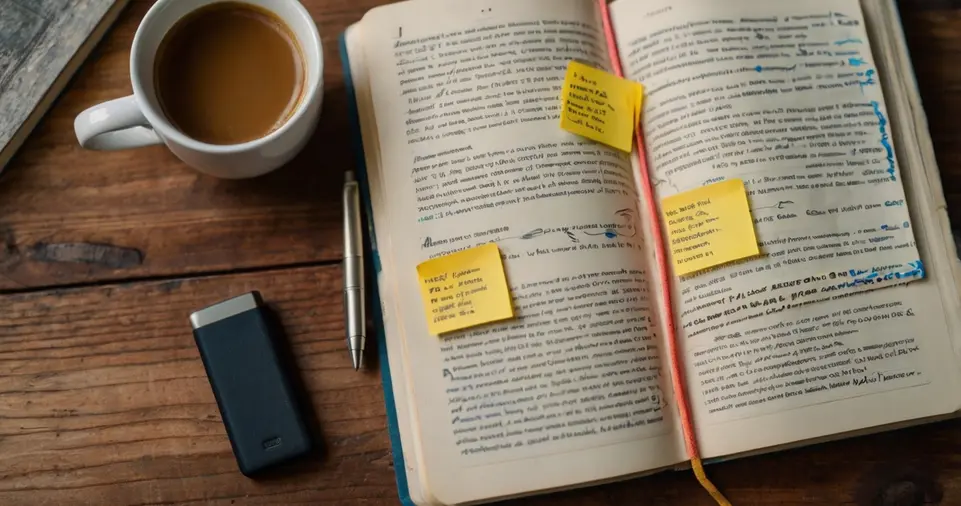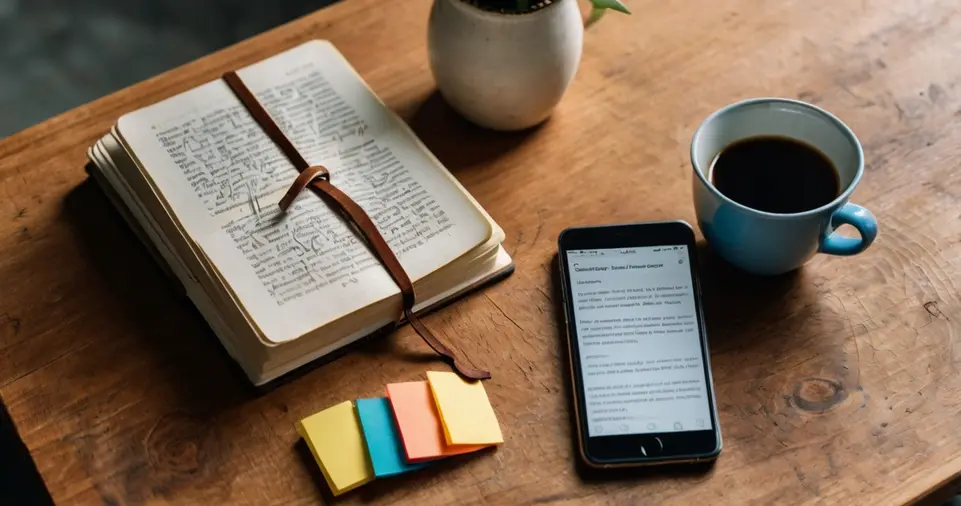Reading is one of the most enriching activities you can do, whether for personal growth, entertainment, or expanding your knowledge.
However, as your collection of completed books grows, you might lose track of what you’ve read, when you read it, and how it impacted you.
Keeping track of the books you read is an excellent way to reflect on your literary journey, remember favorite stories, and even discover patterns in your reading habits.
Tracking your reading can motivate you to read more and explore different genres. It also provides a tangible way to monitor your progress toward personal or yearly reading goals.
With the rise of digital tools, creating and maintaining a book log has become easier than ever, but traditional methods like journals or bookmarks are just as effective.
In this guide, we’ll explore various ways to keep track of your reading, from digital apps to DIY solutions.
Whether you’re an avid reader or just starting to read regularly, these methods can enhance your experience and make it even more enjoyable.
Why You Should Track Your Reading
Tracking your reading habits can have numerous benefits, such as:
- Improved Recall: Recording details about the books you read helps cement the information and key takeaways in your mind.
- Goal Setting: It encourages you to set and achieve reading goals, whether it’s finishing a specific number of books or exploring new genres.
- Personal Reflection: Logging your thoughts and reactions helps you better understand how a book resonates with you emotionally or intellectually.
- Discovering Patterns: You can identify trends in your preferences, such as authors or genres you gravitate toward.
If you’re not yet tracking your reading, now is the perfect time to start. Let’s explore some practical and enjoyable methods to do so.
Use a Journal or Notebook
Keeping a reading journal is one of the most timeless and personal methods for tracking books.
Here’s how to get started:
- Dedicated Notebook: Choose a notebook that appeals to you—whether a plain journal, a bullet journal, or one specifically designed for reading logs.
- Sections to Include: Dedicate space for book titles, authors, start and finish dates, a summary, your rating, and personal reflections.
- Add Creativity: Include your favorite quotes, doodles, or even mini-reviews to make it engaging and creative.
Pro Tip: If you’re unsure how to organize it, look up templates or layouts online for inspiration. A reading journal is also a great offline option for those who prefer to keep things analog.
Digital Tools for Tracking

In today’s digital age, there are countless apps and websites designed to make tracking your reading simple and efficient.
Best Apps for Book Tracking:
- Goodreads: Perfect for cataloging books, setting yearly reading challenges, and connecting with a community of readers.
- The StoryGraph: Ideal for readers looking for personalized recommendations and mood tracking.
- Bookly: A fun app that tracks your reading time and helps you meet goals.
How to Use Spreadsheets:
If you prefer a customizable system, create a Google Sheet or Excel spreadsheet.
Include columns like:
- Title
- Author
- Genre
- Date Started
- Date Finished
- Rating
- Notes
Spreadsheets are highly flexible and allow you to analyze your reading habits over time.
Leverage Social Media
Social media platforms can double as public reading logs and offer a sense of community.
Platforms to Try:
- Instagram (Bookstagram): Share book reviews, favorite quotes, or photos of your current reads.
- YouTube (BookTube): Create videos documenting your reading journey or reviewing books.
- TikTok (BookTok): Share quick thoughts on books or participate in trending reading challenges.
Using social media adds an element of accountability since your followers can see your progress.
Plus, engaging with other readers can provide inspiration and recommendations.
Physical and Digital Bookmarks
Bookmarks can be a handy and simple way to keep track of what you’re reading.
Physical Bookmarks:
Design or purchase bookmarks that have space to write. Jot down notes, key points, or dates as you read.
Digital Options:
If you use an e-reader like Kindle, take advantage of its annotation features. Highlight passages, add notes, and export your highlights for future reference.
This method keeps everything compact and in sync with your reading.
Join a Book Club

Book clubs provide a structured environment for tracking your reading. By participating in discussions, you naturally create a log of the books you’ve read and your thoughts on them.
Types of Book Clubs:
- Local Clubs: Often hosted by libraries or community centers.
- Virtual Clubs: Use platforms like Zoom or Goodreads groups for online discussions.
Book clubs also introduce you to books you might not have chosen yourself, broadening your horizons.
Visual Records for Inspiration
Sometimes seeing your progress visually can be incredibly motivating.
Create a Bookshelf Wall:
Use sticky notes, index cards, or a dedicated corkboard to track your reads. Each note or card represents a book, and you can organize them by genre, rating, or completion date.
Digital Collages:
Platforms like Canva allow you to create a digital collage of book covers. Update it regularly and set it as your desktop or phone wallpaper for daily inspiration.
Set Reading Goals
Having specific reading goals can make tracking more exciting. Whether you aim to read 12 books a year or tackle a 1,000-page classic, setting goals helps you stay focused.
Tips for Setting Goals:
- Start small if you’re new to reading regularly.
- Challenge yourself with diverse genres or authors.
- Reward yourself when you achieve milestones.
Use goal-tracking apps like Habitica or simple calendar reminders to stay on track.
Combine Methods for Maximum Effect
You don’t have to stick to just one way of tracking your books. For instance, keep a detailed journal for in-depth notes while also maintaining a Goodreads account for easy cataloging.
Combining methods allows you to enjoy the benefits of different approaches and ensures you never lose track of your literary adventures.
Benefits of Tracking Your Reading
- Enhances Memory: By documenting key details, you strengthen your recall of the book’s content and themes.
- Sparks Creativity: Reflecting on books can inspire writing, art, or other creative projects.
- Encourages Consistency: A reading log acts as a gentle reminder to keep reading, even during busy times.
ALSO READ: How to Choose the Perfect Book for Your Mood
Final Thoughts
Tracking the books you read transforms your reading habit into a more rewarding experience.
It allows you to appreciate the journey, understand your preferences, and share your passion with others.
Whether you choose a simple notebook, an app, or a creative visual method, the key is consistency and enjoyment.
So, which method will you try first? Whatever you choose, start today and watch your literary world grow richer and more organized!

